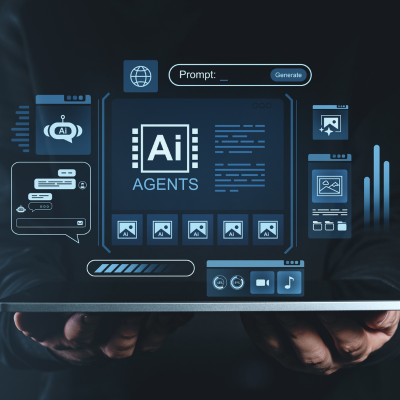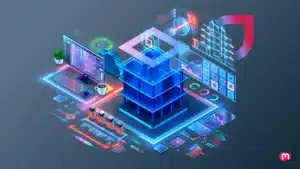Imagine a customer researching your product on mobile, comparing prices on a competitor’s site, reading reviews on social media, visiting your physical store, and finally purchasing via email. Each interaction creates data. Each touchpoint shapes perception. Yet most businesses still treat these moments as isolated events rather than a connected journey.
This fragmented approach costs money. It frustrates customers. It leaves conversion opportunities on the table.
Customer journey mapping 2.0 changes this by integrating artificial intelligence, real-time data analytics, and omnichannel orchestration to transform scattered interactions into a unified, actionable roadmap. Unlike traditional journey maps that visualize static funnels, customer journey mapping 2.0 uses dynamic insights to predict customer behavior, personalize experiences, and eliminate friction across every digital touchpoint.
For marketers aiming to stay competitive, mastering this evolved approach is no longer optional—it’s essential.
What Makes Customer Journey Mapping 2.0 Different
Customer journey mapping has been a cornerstone marketing tool for years. Early versions mapped customer awareness, consideration, and purchase decisions in linear funnels, identifying key touchpoints and pain points along the way. This foundational approach provided valuable clarity.
However, today’s customer behavior defies linear paths. Consumers blend online and offline channels, switch devices mid-journey, and expect personalized experiences at every interaction. Traditional journey maps couldn’t keep pace with this complexity.
Customer journey mapping 2.0 addresses these gaps by introducing three critical innovations:
AI-Powered Predictive Analytics
Instead of static maps, AI algorithms analyze vast customer datasets to identify hidden patterns, predict next actions, and flag emerging pain points before they cause drop-offs.
True Omnichannel Integration
Rather than siloed channel views, customer journey mapping 2.0 unifies touchpoints across websites, apps, social media, email, stores, and customer service into one coherent experience.
Emotion and Sentiment Tracking
Advanced tools now capture how customers feel at each stage, not just what they do, enabling brands to design experiences that resonate emotionally and drive loyalty.
This evolution transforms journey mapping from a planning document into a living, data-driven system that continuously optimizes conversion and customer experience design.
The Business Case for Customer Journey Mapping 2.0
Companies investing in advanced journey mapping see measurable returns. By identifying where customers drop off and why, businesses can remove friction and increase conversions. By understanding emotional triggers, they craft more compelling messaging. By unifying omnichannel experiences, they reduce confusion and build trust.
The stakes are high. A single poorly designed touchpoint can derail an entire customer journey. A seamless experience across digital channels compounds loyalty and advocacy. Customer journey mapping 2.0 ensures every interaction adds value rather than friction.
Core Components of Customer Journey Mapping 2.0
To build an effective customer journey mapping 2.0 strategy, focus on these essential elements:
- Customer Personas and Segmentation – Start with detailed buyer personas based on demographics, behaviors, motivations, and pain points. Different customer segments follow different paths; mapping each separately ensures relevance.
- Comprehensive Touchpoint Mapping – Identify every digital touchpoint where customers interact with your brand: search engines, social media, email, websites, mobile apps, live chat, and beyond. Missing touchpoints create blind spots.
- Behavioral and Emotional Data – Capture what customers do at each stage (browsing, comparing, abandoning, purchasing) and how they feel (frustrated, delighted, confused, confident). This dual lens reveals both functional and emotional friction.
- Conversion Optimization Metrics – Define KPIs for each stage: awareness reach, consideration engagement rates, decision conversion rates, retention repeat purchase rates, and advocacy referral rates. These metrics guide continuous improvement.
- Journey Orchestration – Use marketing journey analytics platforms to automate personalized experiences based on customer behavior in real time, ensuring seamless transitions across channels.
Implementing Customer Journey Mapping 2.0: A Practical Framework
Step 1: Define Clear Objectives
Begin by clarifying what you want to achieve. Are you focused on improving conversion rates, reducing customer churn, increasing lifetime value, or boosting advocacy? Your objective shapes which journey stages and touchpoints deserve priority.
Step 2: Build Comprehensive Personas
Research your audience deeply. Conduct interviews, surveys, and behavioral analysis to understand who your customers are, what problems they solve, and how they make decisions. Create 3-5 detailed personas representing your core customer segments.
Step 3: Map All Digital Touchpoints
Document every interaction point: website pages, email campaigns, social media channels, ads, customer support interactions, and post-purchase engagement. Include both online and offline touchpoints if relevant to your business.
Step 4: Layer in Emotional and Behavioral Insights
For each touchpoint, identify what customers do, think, feel, and say. Where do they experience frustration? Where do they feel confident? These emotional markers reveal opportunities for customer experience design improvements that drive conversions.
Step 5: Identify Pain Points and Opportunities
Analyze where customers drop off, hesitate, or struggle. Common pain points include unclear pricing, complicated checkout processes, slow load times, or confusing navigation. For each pain point, identify a specific opportunity to improve the experience.
Step 6: Implement and Test
Use marketing journey analytics tools to track performance. A/B test improvements at key touchpoints. Measure impact on conversion rates, engagement times, and customer satisfaction. Iterate based on real data.
Real-World Example: Omnichannel Success in Action
Consider a mid-market SaaS company that implemented customer journey mapping 2.0 to address declining conversion rates. Their analysis revealed that prospects researched solutions on mobile (awareness), compared features on desktop (consideration), but abandoned during checkout on mobile (decision stage).
By mapping this omnichannel journey and recognizing the mobile checkout friction, they redesigned their mobile payment experience, added trust signals (security badges, customer testimonials), and implemented one-click checkout. Within three months, mobile conversion rates increased by 18%, and overall conversion optimization improved by 12%.
This example illustrates how customer journey mapping 2.0 transforms scattered insights into targeted, high-impact improvements.
Advanced Tactics for Mastering Customer Journey Mapping 2.0
- Persona-Centric Approach – Don’t create one generic journey map. Build separate maps for each persona, recognizing that different customer segments follow different paths and respond to different messaging.
- Cross-Functional Collaboration – Break down silos between marketing, sales, customer service, and product teams. Each department sees different parts of the journey; unified insights drive better decisions across the organization.
- Dynamic Journey Flows – Use AI and machine learning to create adaptive journey maps that respond to changing customer behaviors and market trends. Static maps become outdated; dynamic systems stay relevant.
- Content Alignment – Ensure your content strategy aligns with journey stages. Top-of-funnel content builds awareness, middle-funnel content enables comparison, and bottom-funnel content drives decisions. Misaligned content creates friction.
- Continuous Validation – Regularly validate your journey maps with real customer feedback, surveys, and A/B testing. Customer behavior evolves; your maps must evolve with it.
Measuring Success: Key Metrics for Customer Journey Mapping 2.0
- Conversion Rate by Stage – Measure what percentage of customers advance from awareness to consideration to decision to retention.
- Drop-Off Points – Identify where customers exit the journey and why. These are your highest-priority optimization targets.
- Time to Conversion – Monitor how long the average customer takes to move through each stage. Longer timelines may indicate friction.
- Customer Satisfaction Scores – Use NPS (Net Promoter Score) and CSAT surveys to gauge emotional satisfaction at key touchpoints.
- Customer Lifetime Value – Track how journey improvements impact long-term customer value, not just immediate conversions.
- Omnichannel Consistency – Measure whether customers experience consistent messaging and service quality across all digital touchpoints.
These metrics transform customer journey mapping 2.0 from a planning exercise into a performance management system.
Why Invest in Learning Customer Journey Mapping 2.0
The professionals who master customer journey mapping 2.0 become invaluable to their organizations. They bridge marketing, data, and customer experience. They speak the language of both strategy and analytics. They drive measurable business results.
For marketers serious about advancing their careers, developing expertise in customer journey mapping 2.0 is a strategic investment. It opens doors to senior roles in customer experience design, marketing operations, and growth leadership.
Amquest Education’s Digital Marketing and Artificial Intelligence course equips you with exactly these skills. The program combines foundational marketing strategy with hands-on AI tools training, real-world case studies, and practical projects that build your portfolio. You’ll learn how to map journeys, analyze customer data, optimize digital touchpoints, and drive conversions using industry-standard platforms and methodologies.
The course emphasizes omnichannel strategy, customer experience design, and conversion optimization—the exact competencies that define customer journey mapping 2.0 mastery. Through internship opportunities with industry partners, you’ll apply these skills in real business environments, building the experience that employers seek.
Actionable Implementation Checklist
Ready to launch your customer journey mapping 2.0 initiative? Use this checklist:
- Define your primary business objective (conversion, retention, or advocacy focus).
- Research and document 3-5 detailed customer personas with behavioral and motivational data.
- Audit all digital touchpoints where your customers interact with your brand.
- Conduct customer interviews or surveys to understand emotions and pain points at each stage.
- Map the current journey for your primary persona, including behaviors, thoughts, and feelings.
- Identify 3-5 high-impact pain points where customers experience friction or drop off.
- Prioritize improvements based on potential impact on conversion rates and customer satisfaction.
- Select a marketing journey analytics tool to track and measure performance.
- Implement your first round of improvements and establish baseline metrics.
- Test, measure, and iterate based on real customer data and feedback.
Frequently Asked Questions
What is the core difference between customer journey mapping and customer journey mapping 2.0?
Traditional journey mapping visualizes customer paths through awareness, consideration, and purchase stages. Customer journey mapping 2.0 adds AI-powered predictive analytics, real-time omnichannel orchestration, and emotional sentiment tracking to create dynamic, continuously optimized experiences.
How does customer experience design fit into customer journey mapping 2.0?
Customer experience design translates journey insights into action. While customer journey mapping 2.0 identifies what customers do and feel, customer experience design focuses on creating seamless, empathetic interactions at every touchpoint to address those needs and emotions.
Which digital touchpoints are most critical to map?
The most critical digital touchpoints depend on your business model, but typically include your website, email campaigns, social media channels, mobile app, paid search ads, and customer support channels. Map any touchpoint where customers interact with your brand.
How can I measure the ROI of customer journey mapping 2.0?
Track conversion rates by stage, customer drop-off points, time to conversion, customer satisfaction scores, and customer lifetime value before and after implementing journey mapping improvements. These metrics directly connect journey optimization to business results.
What tools enable customer journey mapping 2.0?
Platforms like Salesforce Journey Builder, Adobe Experience Cloud, HubSpot, and Qualtrics provide the analytics, automation, and visualization capabilities needed for customer journey mapping 2.0. Many also integrate AI for predictive insights.
How often should I update my customer journey maps?
Customer behavior evolves continuously. Review and validate your journey maps quarterly at minimum, and update them whenever you implement significant changes to your digital touchpoints, marketing strategy, or product offerings.
Conclusion
Customer journey mapping 2.0 represents a fundamental shift in how businesses understand and optimize customer experiences. By combining AI-powered analytics, omnichannel integration, and emotional intelligence, this evolved approach transforms fragmented customer interactions into coherent, conversion-focused pathways.
The businesses that master customer journey mapping 2.0 will outcompete those relying on outdated methods. They’ll understand their customers more deeply, optimize more effectively, and drive measurable growth.
If you’re ready to develop expertise in this critical discipline, Amquest Education’s Digital Marketing and Artificial Intelligence course provides the comprehensive training, hands-on projects, and industry connections you need to lead in customer journey mapping 2.0. Start your journey today and position yourself at the forefront of customer-centric marketing.










